
Editor’s Note: This story originally appeared on The Penny Hoarder.
Do you wish you had more money set aside? Not a rainy day fund for unexpected expenses but something that could cushion the financial stress of a major life event?
When Nora Martin was expecting her first child, she wasn’t going to let all the many baby costs bring her down. She had a plan.
“I pretty much wrote up everything that we needed … and then split up the total over six months to see how much we would have to save each month to get to our goal,” Martin said.
This practice of splitting a large financial goal into easier-to-manage chunks has a special name in the personal finance world. It’s called setting up a sinking fund.
What Is a Sinking Fund?
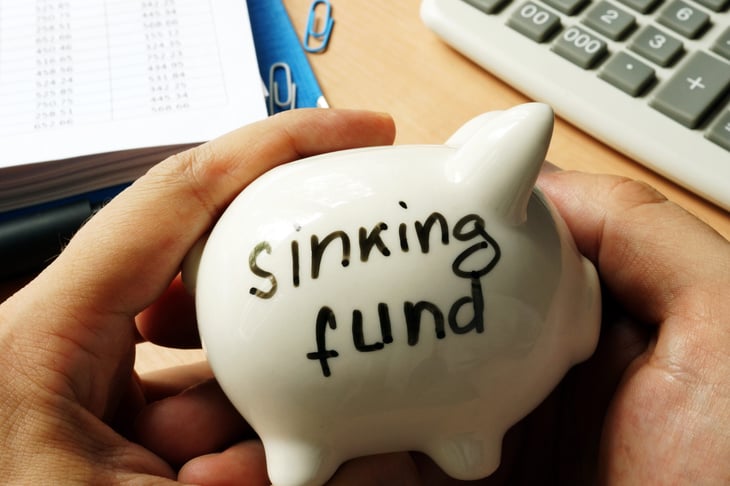
A sinking fund is a pool of money you regularly contribute to so you spread out the cost of an upcoming expense over time.
It is different from an emergency fund or a standard savings account because a sinking fund is specifically earmarked for a large expense or big-ticket item.
The term “sinking fund” comes from corporate finance lingo. Businesses set aside money in a sinking fund to repay debt or a bond or to prepare for a large capital expenditure.
But you don’t have to own a business to benefit from this money-saving strategy.
Learning to add sinking funds to your budgeting approach is a smart strategy to save up for big money goals, future financial obligations and recurring bills outside of regular monthly expenses.
Why Do I Need a Sinking Fund?
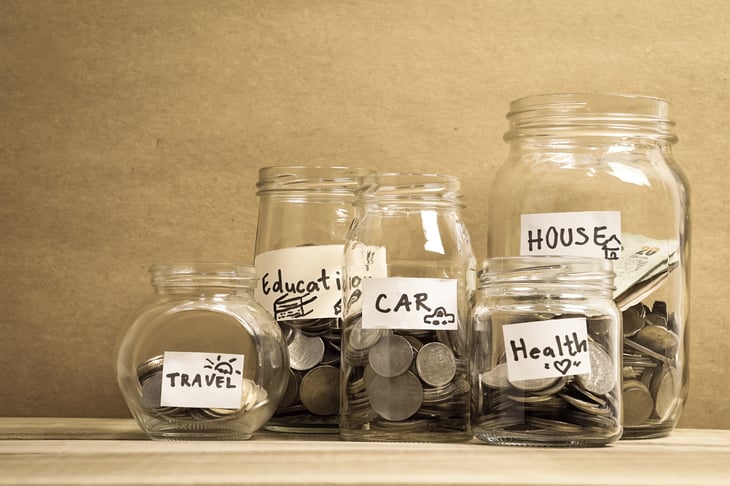
Why set up a sinking fund versus dumping all your money in one of your other savings accounts and calling it a day? Here are a few reasons to start a sinking fund account.
Sinking Funds Help Manage Large Expenses for Major Life Events

Saving money in a sinking fund helps you manage upcoming costs that would overwhelm you if you neglected to plan ahead.
If you don’t have a great deal of disposable income each month, it might be tough — if not impossible — to cover a big expense all at once.
For instance, if you waited until December to buy Christmas presents and planned to spend about $800, you might be forced to charge the expenses on your credit card to make it happen.
If you set aside money over time in a separate savings account as a sinking fund — say, $100 a month for eight months — you can avoid going into debt or having to borrow money.
Sinking Funds Save Emergency Funds for Real Emergencies
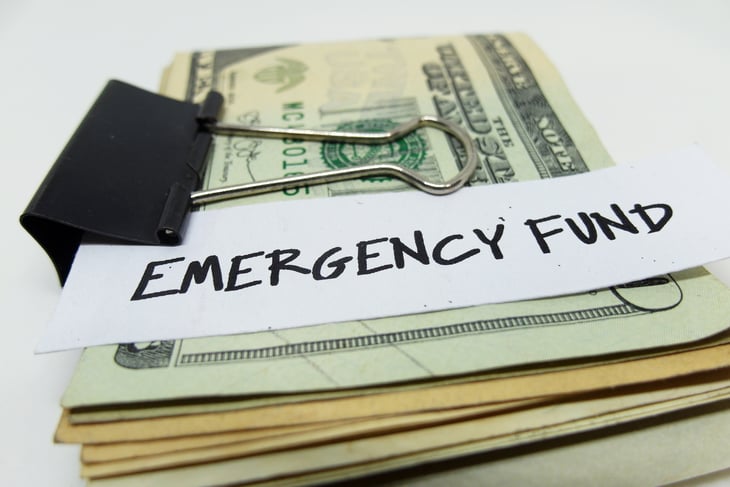
Having a sinking fund also helps you avoid dipping into your emergency fund when (non-emergent) big expenses pop up.
Likewise, you don’t have to pause your progress on other money goals, like paying down long-term debt or investing for retirement.
Sinking Funds Can Help Weather the Storm of Variable Income

Sinking funds make upcoming expenses more manageable. And when it’s time to actually spend the money, you can do so guilt free because you know you’ve been saving up specifically for that purchase.
Sinking funds are also a lifesaver if you have variable income. It can be tough to budget if your income fluctuates from month to month.
With sinking funds, you can put money aside during high-earning months and use that cash during low-earning months.
Types of Sinking Funds You Can Add to Your Budget

The sinking fund categories you’ll add to your budget will depend on your individual needs and desires.
In general, there are three types of sinking funds: planned goals, recurring costs and indeterminate future expenses.
Planned Goals Sinking Funds

Some sinking fund examples that would be considered planned goals include:
- Vacations
- Weddings
- New baby expenses
- Down payment for a house
- Down payment for a new car
These are typically one-time expenses you’ll budget for and can stop saving toward once you’ve reached your targeted amount.
Recurring Costs Sinking Funds

Some examples of recurring expenses you might want to set up sinking funds for include:
- Car insurance premiums
- Car registration renewals
- Home insurance premiums
- Christmas gifts
- Birthday gifts
- Holiday expenses
- Back-to-school shopping
- Summer camp fees
- Self-employment taxes
- Yearly subscriptions
- Computer software renewals
- Annual fees for credit cards
These are costs you know will come up around the same time each year and need to plan for on an ongoing basis.
Indeterminate Future Expenses

Indeterminate future expenses are expenses that are bound to happen but you can’t plan when they’ll occur or exactly how much you’ll need. These can include:
- Medical expenses
- Car maintenance or car repairs
- Home repairs or maintenance
- Appliance replacements
Do your best to estimate how much you’ll need. Reviewing your past spending in these categories can help.
The Difference Between a Sinking Fund and an Emergency Fund

You should have your emergency fund separate from your sinking funds. They are not the same thing and ideally should be kept in separate savings fund accounts.
Sinking funds are for planned expenses you can anticipate. Emergency funds are a safety net that should be used only in situations that are urgent, important and unexpected.
For example, you’d use your sinking fund money on plane tickets to visit your mom for the holidays.
But if your mom got into a car accident and you needed to book a plane ticket at the last minute to help her with her recovery, that’s when you’d use your emergency fund.
How to Save Money With a Sinking Fund
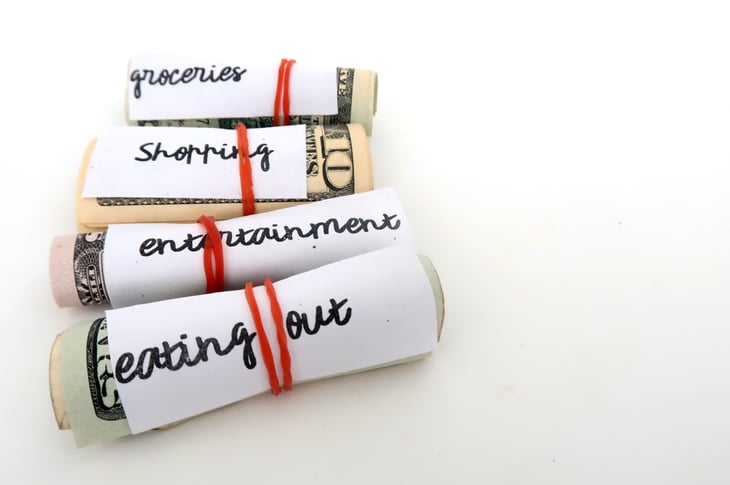
It takes a little math and some organization, but it isn’t difficult to save using sinking funds.
First, you need to figure out the total amount you want to save. Then divide that number by the amount of time you have until you’ll need to spend the money.
This will give you the amount you’ll need to set aside in your sinking fund every month (or week or pay period).
For example, if you want to save $1,000 for a vacation over 10 months, you’d need to add $100 to your vacation sinking fund each month. If math isn’t your strong suit, you can use one of the online sinking fund calculators to figure it out.
Types of Accounts for Sinking Funds

Since sinking funds typically cover short-term savings goals, you’ll want to be able to access your money easily. Keep it in a high-yield savings account or money market account with attractive interest rates.
Those who prefer the envelope method may keep their sinking fund savings in cash.
If you manage your money with a budgeting app, you can set up your sinking funds digitally. Mint is one of our favorite budgeting apps that doesn’t charge monthly fees.
For longer-term goals, a certificate of deposit, or CD, is another option to store your money and watch it grow — but only if you know you won’t need to withdraw it before the CD matures. You’ll get hit with penalty fees by taking your money out earlier.
While you’d potentially get the greatest return keeping your savings in a brokerage account, that’s usually not recommended for sinking funds because of the risk of losing your savings due to stock market volatility.
5 Tips for Success With Sinking Funds

Become a pro at using sinking funds with this advice.
1. Separate Your Sinking Fund From Your Main Checking Account

It’s helpful to keep your sinking fund money in a separate account so you don’t wind up spending your savings on Uber Eats or impulse purchases at Target.
2. Name Your Sinking Fund Accounts

Giving your sinking fund a name — like “Italy trip” or “house of my dreams” — can help motivate you to keep saving money and not dip into it for something frivolous.
3. Automate Your Savings Transfers
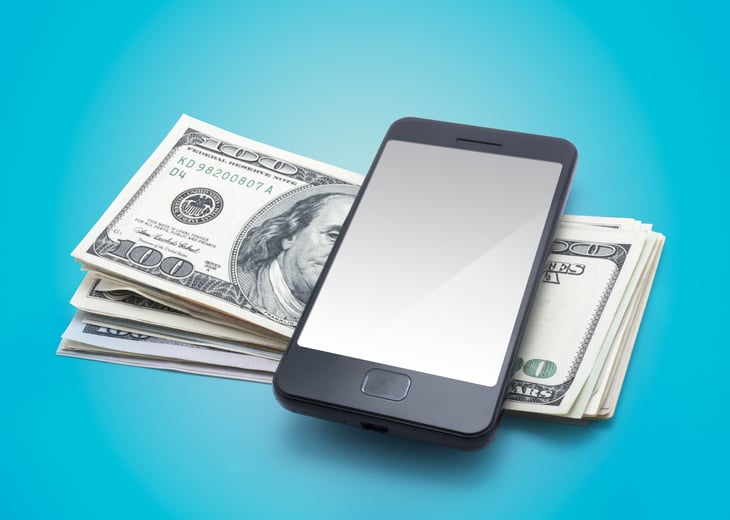
Streamline the process of saving by setting up automatic transfers or direct deposits into your sinking fund accounts so you don’t even have to think about doing it.
Once you have a sinking fund setting on your checking and savings accounts, it will be easy to automate transfers.
4. Apply Windfalls to Sinking Funds

If you receive extra money — such as a bonus or tax refund — don’t wait. Add it to your sinking fund today to accelerate your progress toward meeting your financial goals.
5. Prioritize Multiple Savings Goals

When you list out all the reasons you have to start saving funds, putting money aside for all of these expenses may seem overwhelming. Prioritize needs — like taxes and insurance bills — over wants — such as vacations or holidays.
And know you don’t have to save up for everything all at once. Establish a plan for reaching your money goals that is feasible for you and your financial situation.
